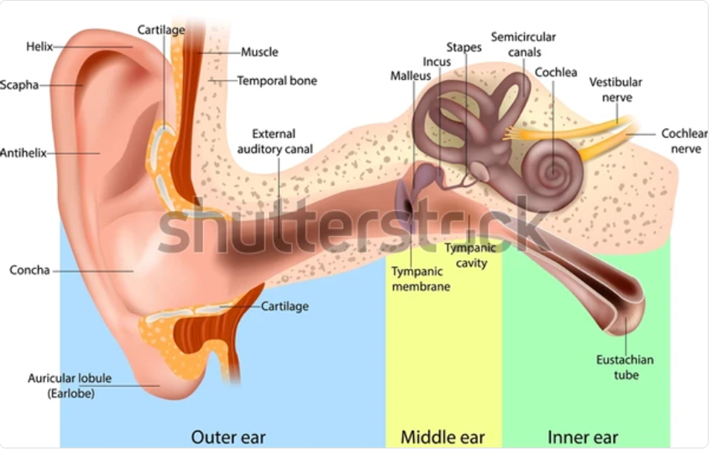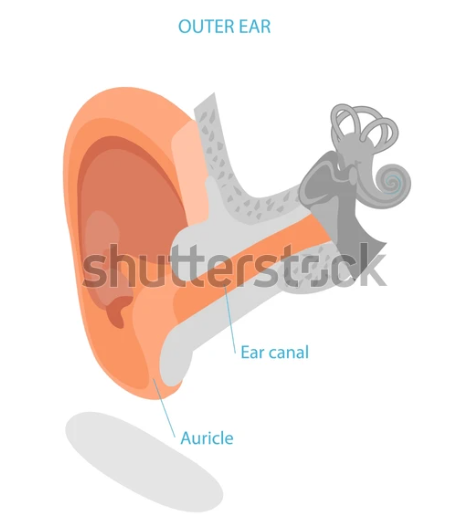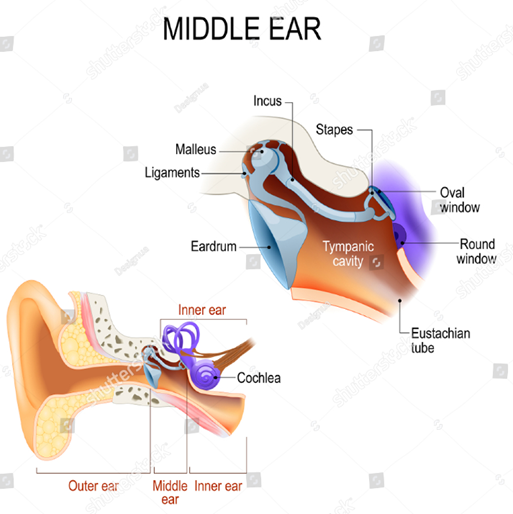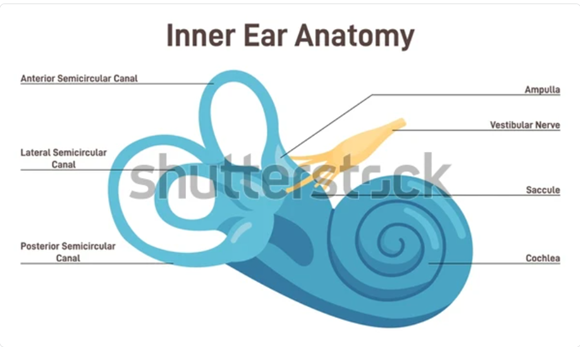The most common type of hearing loss is age-induced, but it can also affect youngsters too. Although hearing loss is very individual, there are three main types of hearing loss.
Conductive hearing loss: when the hearing loss is in the ear canal or the middle ear.
Sensorineural hearing loss: when the hearing loss is caused by problems in the nerve fibres or sensory cells of the cochlea in the inner ear.
Mixed hearing loss: when the hearing loss has both conductive and sensorineural components.
A common misconception is that hearing loss has to do with volume. Most often that’s not the case. In fact, some people only have issues hearing at specific frequencies. The challenge here is that you can hear speech, but you can’t understand it.
The Ear
The human ear is an amazingly sophisticated, sensitive and complex organ that’s always hard at work. The ear has three main areas: the outer ear, middle ear and inner ear. These three have to all work properly for us to hear and enjoy the miracle of sound.

Outer Ear
The outer ear is made up of the external part of the ear and the ear canal. The eardrum at the end of the ear canal forms the boundary to the middle ear. The outer ear picks up sound waves and takes them to the eardrum, which makes the eardrum vibrate.


Middle Ear
The middle ear is filled with air. There are three tiny bones in the middle ear (known as the ossicles): malleus, incus and stapes. They’re also referred to as the hammer, the anvil and the stirrup. Their main function is to take the vibrations from the eardrum to the inner ear. The two muscles attached to the ossicles are activated when very loud sounds reach the ear. Their main function is to reduce excessive sound pressure before reaching the inner ear.
Inner Ear
The inner ear consists of the cochlea and the vestibular system. When sound approaches the ear, the stirrup will vibrate to make the inner ear fluid move and activate the hair cells in the cochlea. There are about 20,000 hair cells which all send impulses to the brain via the acoustic nerve. This is what the brain perceives as sound. The vestibular system is made up of the semicircular canals, ampula, saccule and the vestibular nerve and maintains our balance and orientation in space.


